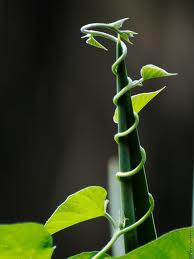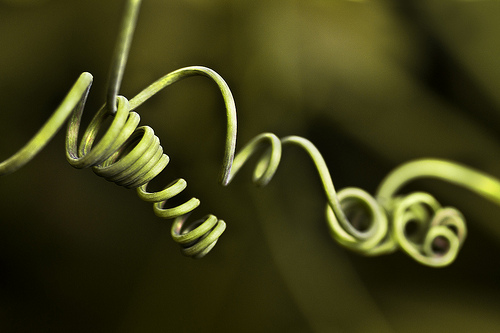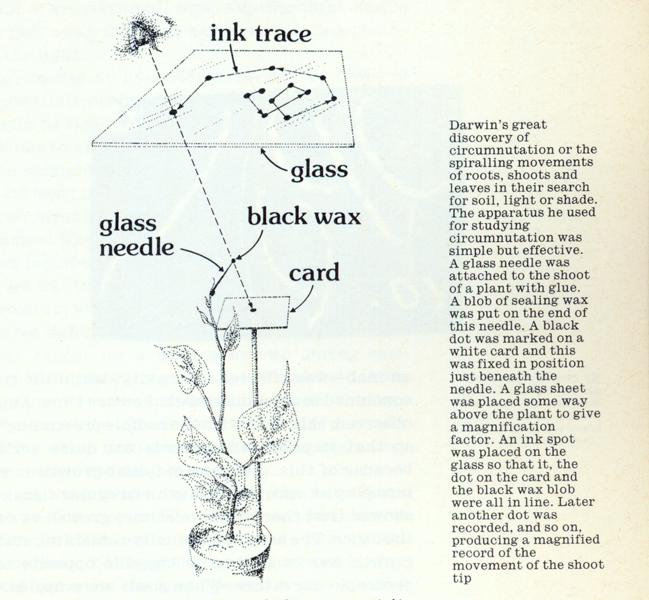What is thigmotropism?
Plant responses allow plants to be aggressive towards animals, to actively aid in cross pollination, and climb to heights where they can gain maximum exposure to sunlight (Braam, 2004).
Directional responses to physical contact or touch, thigmotropism (in the older literature ’haptotropism’), play an important role in the orientation of many plant organs (Ch.5). These are most apparent in certain specialized plant organs, such as the tendrils of climbing plants and the trapping organs of insectivorous species (Hart, 1992, p. 24).

A common example of climbing plants is the morning glory (Convolvulaceae family) coiling around a fence post or rigid surface (McIntosh, 2012). Thigmotropism can be positive as we see when a stem of a plant grow up toward the touching object, or negative, such as a root’s movement away from a touching object and into the soil (Hart, 1992). Charles Darwin observed these touch-induced plant behaviors in 1881 and described how roots often changed their growth direction after contacting obstacles in the soil (Chehab et al, 2008).
Coiling tendrils.

Tendrils
Most commonly, we refer to thigmotropism when the tendrils coil such as in twining plants as the morning glory. Tendrils are long, slender structures which often coil upon contact and attach to support the plant. Before the tendrils touch anything they are often spiraled. The tendrils extend outward making wide sweeping, circling motions which are visible in time-lapse video (Barrett, 1989). The tendrils aide plants with narrow stems which are not self-supporting as they climb to access sunlight without the plant having to invest in stem bulk. This growth movement discovered by Darwin is referred to as circumnutation.

Circumnutation helps the tendril have a greater chance of touching something on which it can climb. In these circumstances, thigmotropism is seen as the specialized epidermal cells sense the object and the tendrils begin to curl around it (Hart, 1992). This process, known as differential growth, involves the stimulation of growth in certain areas of the tendrils.
The side of the tendril which is opposite to the side of contact will grow at a faster rate than the contact side. In some cases, the cells on the contact side will actually compress, which enhances the curving response. Therefore, the non-contact side begins to elongate faster than the rest of the tendril, while the contact side actually compresses (Vartanian, 1997).
Sometimes a rapid coiling of tendrils occurs because of changes in turgor pressure (Vartanian, 1997). Cells opposite the touch stimuli expand or elongate and cells on the side of the tendril that received contact will contract or compress.
Degrees of sensitivity.
Plants are capable of sensing touch stimuli of miniscule degrees. The sensitivity of plant tendrils can exceed the sensitivity of human skin by ten times (Table 1) (Vartanian, 1997). Human skin can detect a thread weighing 0.002mg being drawn across it. Yet, a feeding tentacle of the insectivorous sundew plant showed sensitivity by responding to a thread of 0.0008 mg, and a climbing tendril of Sicyos responded to a thread weighing just 0.00025 mg. This is significant to the plant as it responds positively or negatively to its surroundings.
|
Table 1. Touch Sensitivity Comparison
| |
|
|
Weight of thread detected (mg) |
|
Human skin |
0.002 |
|
Feeding tentacle of insectivorous sundew plant (Drosera ) |
0.0008 |
|
Climbing tendril of Sicyos |
0.00025 |